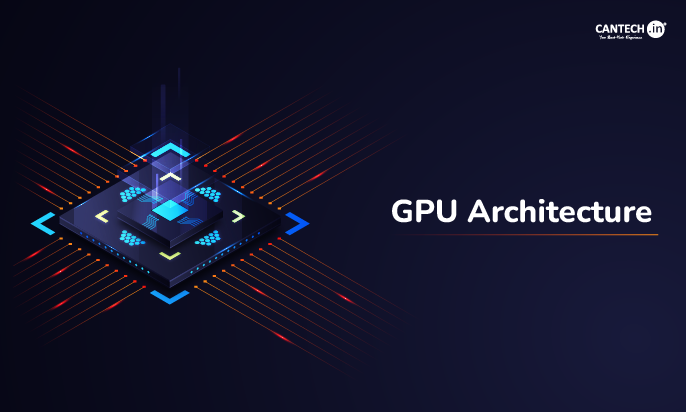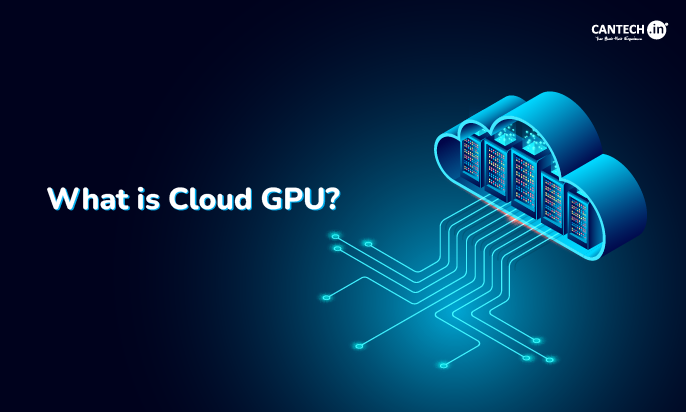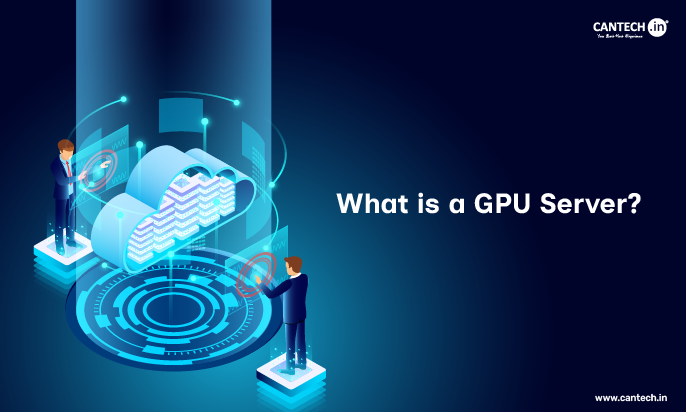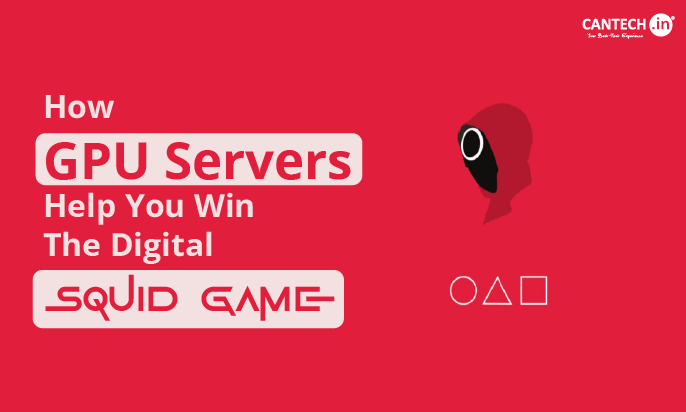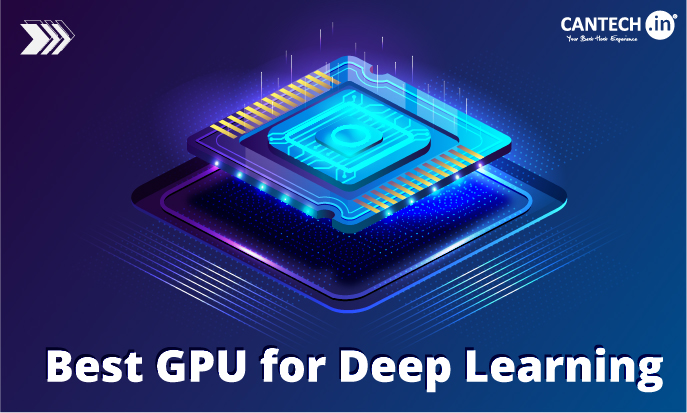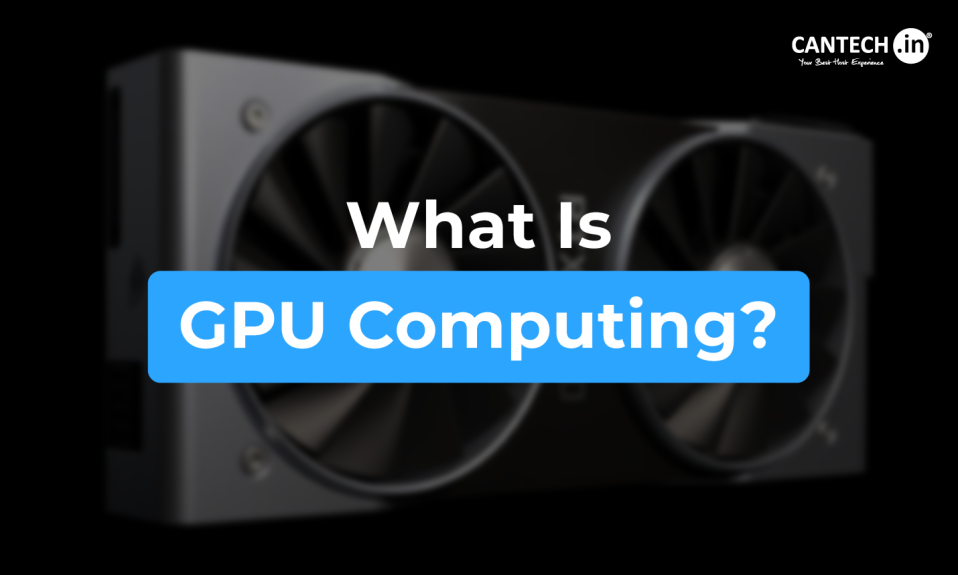AI and machine learning systems drive an exceptional increase in computing requirements across multiple industries. The GPU stands as the key driver of modern computing transformations because graphics specialists developed this multi-threading machine to render images first before it became essential for accomplishing multiple processing demands. The GPU industry features NVIDIA as its major player who designs GPU architectures to handle growing information computing requirements.
This article examines every element of NVIDIA’s GPU architecture including its latest features and analyzes how it enhances different industries today. This article examines NVIDIA’s basic GPU mechanisms plus explains how their designs evolved to create our current computing systems. Anyone working with advanced computing systems needs to understand NVIDIA GPU architecture to see how its internal design makes AI, ML, HPC, and gaming applications work.
NVIDIA GPU architecture excels at handling many parallel tasks because it distributes work divisions more efficiently than CPUs. The natural ability of GPUs to process multiple threads at once leads them to dominate tasks in graphics design and scientific research plus deep learning due to their need to work on extensive data collections. The GPU architecture has evolved through several versions by improving memory handling, interconnection technologies and core engineering which has boosted its processing power and energy efficiency. Our analysis covers the main GPU features including SMs, memory systems, and interconnect design to explain how these buildings improve system performance and speed.
This architecture has been refined over numerous generations, incorporating innovations in memory management, interconnect technology, and core design, resulting in a significant increase in computational power and efficiency. We will examine the key architectural components, such as streaming multiprocessors (SMs), memory subsystems, and interconnects, along with their role in maximizing performance and throughput.
This exploration of NVIDIA GPU architecture will not only provide a technical understanding of its inner workings but will also highlight its broader impact on various industries. From accelerating scientific research and medical breakthroughs to powering immersive gaming experiences and enabling self-driving cars, the capabilities offered by NVIDIA’s GPUs are transformative. Understanding this architecture is key to appreciating the technological advancements driving these applications and to envisioning future possibilities in high-performance computing.
GPU Architecture Explained: A Layered Approach
NVIDIA built their GPU architecture to achieve tremendous parallel computing and superior performance results. The Streaming Multiprocessor forms the foundation of the NVIDIA GPU structure. SM units contain multiple CUDA cores and built-in structure to fetch instructions while managing registers and shared data space. The GPU’s SMs serve as its main processing elements by managing thread parallel execution that defines the GPU’s programming structure. A GPU’s total processing speed depends on its number of Streaming Multiprocessors because more of these cores increase the parallel processing workload.
Each CUDA core shows great effectiveness at handling math operations and memory transfers. These processor cores run the same command across different data points all at once through SIMD capabilities. Having many CUDA cores allows faster speed in multiple parallel processing tasks. The design includes a shared memory feature that delivers fast access to data between threads operating inside an SM unit. Threads obtain memory data faster on shared memory because it runs significantly better than global memory which serves all Streaming Multiprocessors.
Memory Subsystem and Interconnect
GPU performance depends mostly on how well its memory system performs. NVIDIA GPUs have multiple memory levels with registers as the fastest local space per thread followed by shared memory which has faster access than global memory which offers large capacity yet slow speed across all Streaming Multiprocessors. Memory optimization plays a major role because it deals with the main performance limitation that affects complex computing operations.
NVIDIA keeps enhancing its memory technologies by introducing Unified Memory for smooth CPU-GPU memory sharing and HBM which transfers data faster than standard GDDR memory. The new memory solutions help both speed up data transfers and keep GPUs fully occupied.
The interconnect system ensures that different GPU components and multiple GPUs can easily share information. NVLink and NVSwitch technology from NVIDIA generates fast energy-efficient connections between GPU processing units and multiple GPUs with each other. The interconnected components help enhance GPU performance when handling complex HPC and AI training applications.
NVIDIA GPU Architecture Overview: A Generational Perspective
NVIDIA has improved its GPU architecture gradually since its beginning. In the beginning of GPU development graphics rendering occupied most attention with simple design for Streaming Multiprocessors. The company intensified its effort to build better parallel computing features after the applications grew beyond their original display purposes. Graphics Processing Unit (GPU) technology made breakthrough changes through multiple product generations.
More CUDA cores appear in each product update to provide stronger processing for harder jobs. More CUDA cores at every generation helps NVIDIA handle bigger AI and HPC application demands.
The construction of the SM system has been modernized by adding better ways to schedule instructions while making the register file and shared memory work better. Enhanced operations allow the system to use resources better and make each core work faster.
NVIDIA keeps introducing better memory technologies to ensure faster performance through HBM and GDDR memory. The new memory solutions help GPUs process data faster to eliminate memory restrictions.
- Unified Memory: This innovation simplifies memory management by allowing seamless data sharing between the CPU and GPU, reducing the overhead associated with data transfers and streamlining the programming model.
Curious how CPUs and GPUs share responsibilities? Explore our complete guide on CPU vs GPU difference.
- High-Speed Interconnects: The introduction of NVLink and NVSwitch technologies has revolutionized inter-GPU communication, enabling efficient scaling of performance in multi-GPU systems. This is particularly important for large-scale AI training and HPC simulations.
The newest architecture designs feature Tensor Cores to speed up deep learning operations. The cores handle deep learning operations through detailed matrix multiplication work and achieve better AI computation results.
Today’s advanced processing hardware provides both Ray Tracing Processing Units that perform ray tracing better than software. These cores enable better graphics rendering of games and visual content which performs better than ray tracing done through regular software.
New NVIDIA architectures integrate advanced programming language support for CUDA and Vulcan to let developers create optimal GPU execution programs. The programming models let programmers tap into every aspect of how the GPU handles parallel work.
GPU Architecture: Applications and Impact
The advancements in NVIDIA’s GPU architecture have had a profound impact across numerous fields:
- High-Performance Computing (HPC): GPUs are now indispensable tools in scientific simulations, enabling researchers to tackle complex problems in fields like climate modeling, drug discovery, and materials science. The massive parallel processing capabilities of GPUs significantly reduce the time required for these simulations, accelerating scientific breakthroughs.
- Artificial Intelligence (AI) and Machine Learning (ML): The rise of deep learning has been inextricably linked to the advancements in GPU technology. GPUs excel at the matrix multiplications and other operations central to deep learning algorithms. The availability of specialized Tensor Cores further enhances the performance of AI and ML workloads, accelerating the training and inference of complex models. This has led to breakthroughs in areas like image recognition, natural language processing, and robotics.
- Gaming: GPUs are the foundation of modern gaming, enabling high-fidelity graphics and immersive gameplay experiences. The advancements in ray tracing capabilities, powered by dedicated RT Cores, have brought unprecedented levels of realism to gaming visuals.
- Data Centers: NVIDIA GPUs are increasingly deployed in data centers for accelerating various workloads, including AI inference, high-performance computing, and big data analytics. Their ability to handle massive datasets and perform complex computations efficiently makes them vital components in modern data center infrastructure.
- Autonomous Vehicles: The processing power of NVIDIA GPUs is crucial for enabling the real-time processing of sensor data and decision-making required for autonomous driving. The ability to process vast amounts of data from cameras, lidar, and radar sensors at high speeds is critical for ensuring the safety and reliability of self-driving cars.
Benefits of GPU Servers
Accelerated parallel processing: GPU servers excel in delivering massively parallel workloads, greatly reducing the time taken for completing the tasks which use a great amount of computation. This would help the implementation of several applications that are quite data intensive, the likes of which include deep learning, training AI models, scientific simulations, and big data analytics, as they need to work with huge volumes of data at once to achieve efficiency. The parallel architecture of the GPUs offers time savings during execution with respect to conventional CPU-based servers.
Capabilities for superior graphics rendering: For applications needing high-quality graphics rendering, such as video editing, animation, and computer-aided design (CAD), GPU servers deliver unparalleled performance. Their custom architecture is specifically designed to render and create complex visual data, which delivers fast rendering times and higher visual fidelity. Essentially, these improved capabilities lead to greater productivity and enhancement of the workflow of professionals in the creative field.
Optimized use of resources: In some workloads, GPU servers offer much superior utilization of computing resources than their CPU counterparts. In addition, they achieve some degree of higher throughput and lower latencies for parallel tasks, which translates to substantially fewer CPUs needed to deliver similar performance levels. This, in turn, translates into considerable cost savings with regard to hardware acquisitions and energy consumption.
Seamless scalability: GPU servers can seamlessly scale up with the growing computational requirements. Adding extra GPUs in a server cluster leads to a linear increase in processing power, providing a flexible and economical solution to the problem of expanding workloads and increasing amounts of data. Adaptability is particularly useful for businesses and research institutions with continuously evolving computational needs.
Reduced time-to-results: The faster processing power of GPU servers directly translates into faster time-to-results. This is a vital benefit given its wide applicability, from accelerating scientific research and drug discovery to speeding up the development and deployment of AI models. Shorter turnarounds allow faster iterations, higher productivity, and faster time to market for products and services.
Real-time data processing: This makes GPU servers ideal for applications where real-time data processing is expected, such as high-frequency trading, navigation of autonomous vehicles, and real-time video analytics. This very rapid data processing power means that GPU servers can be critical to systems that require immediate response and life-or-death decision-making. This immediacy can be the deciding factor in the case of delay discrimination in mission-critical applications.
Improved AI and Machine Learning Capabilities: In addition to general parallel processing, GPU servers bring additional specialized capabilities for AI and machine learning workloads. For instance, Tensor Cores in NVIDIA GPUs greatly speed up training and inference of deep learning models, shortening the time taken to develop and deploy models. Thereby, innovation becomes faster, and the AI solution is deployed much more efficiently and quickly.
Energy Efficiency for Excellent Performance: While GPU servers draw massive power, they are also built for energy efficiency. More modern power management strategies and architecture lessen energy consumption per compute unit, which reduces operational costs and the carbon footprint compared to a lesser-efficient server. This becomes a major consideration in bigger deployments and eco-friendly operations.
Easy Management and Administration: A lot of the GPU server solutions come with good management tools and easier administration interface. These aspects of simplicity in management help pave the way for alleviation of the overhead needed for managing a massive computing infrastructure, as the IT teams can use this time on tasks of greater urgency. Such streamlined management, in turn, means an increase in efficiency and less downtime.
Wrapping it Up
NVIDIA’s architecture is one of the glorious embodiments of engineering, continuously evolving to meet the demands of today’s computationally intensive world. Divided into layers, with an emphasis on massively parallel processing, the specialized cores such as Tensor Cores and RT Cores, while also high-speed interconnect interfaces, ushered NVIDIA into the forefront of the GPU market.
Understanding this architecture is what makes it possible to appreciate its impact across diverse fields, be it the acceleration of scientific discovery, immersive gaming, or even autonomous vehicle development. The continuous spirit of innovation embodied in GPU architecture will further catalyze hi-tech development in high-performance computing, AI, and many other technology frontiers. The destiny of computing will forever be intertwined with the acetylene growth of GPUs into selective technology, promising even more transformative applications in our time.
The moment when simple video rendering starts evolving into new-age capabilities being offered by NVIDIA GPUs lays down the context and validates the worth of architectural innovation that is nowhere close to relent on performance pursuits. With computations doubling up often, NVIDIA continuously endeavors towards going beyond the already established GPU architecture.
In the near future, NVIDIA’s GPU architecture will possibly see core specialization for specific tasks supported by more efficient memory systems and advances in inter-GPU communication for large and complex applications. We will see sustained improvements in power efficiency, critical in the reduction of the high-performance computing environment footprint, and deeper integration with software and programming models that will simplify development while enabling performance gains that broaden use to an even wider user audience.
The advancements in NVIDIA’s GPU architecture are not just incremental improvements; they represent paradigm shifts in how we approach computationally intensive tasks. The ability to efficiently process massive datasets in parallel opens up new possibilities in scientific research, AI development, and various other fields. Understanding the underlying principles of this architecture provides a valuable framework for anyone involved in these domains, empowering them to develop innovative solutions and push the boundaries of what’s possible.
FAQs
What are GPU servers, and how do they differ from traditional servers?
GPU servers leverage the parallel processing power of Graphics Processing Units (GPUs) alongside CPUs. Unlike traditional servers that primarily rely on CPUs for computation, GPU servers are designed to accelerate computationally intensive tasks. This makes them ideal for applications like AI, machine learning, and high-performance computing. The key difference lies in the architectural design, focusing on parallel processing capabilities for significantly faster results in specific workloads. GPUs handle many calculations simultaneously, whereas CPUs handle them sequentially. This parallel approach is what provides the speed advantage. As a result, GPU servers are substantially more efficient for specific tasks than CPU-only servers.
What types of workloads are best suited for GPU servers?
GPU servers shine in handling massively parallel computations. Deep learning and AI model training are prime examples, benefiting from the ability to process vast datasets concurrently. High-performance computing (HPC) simulations, such as those used in scientific research, also see significant speedups. Graphics-intensive tasks like video rendering and 3D modeling leverage the GPU’s inherent strengths. Big data analytics also benefit, with faster processing of large datasets leading to quicker insights.
What are the benefits of using GPU servers over CPU-only servers?
The most significant advantage is dramatically faster processing for specific applications. GPU servers deliver significantly reduced processing times for parallel tasks, leading to quicker results and increased productivity. They are more energy-efficient for certain workloads, resulting in lower operating costs. Scalability is another key benefit; adding more GPUs easily increases processing power. This makes them a cost-effective solution for growing computational needs. Specialized applications like AI and deep learning greatly benefit from the architecture optimized for those tasks.
What are the typical costs associated with GPU servers?
The cost of GPU servers varies greatly depending on several factors. The number and type of GPUs significantly impact the price. High-end GPUs with more CUDA cores and faster memory are more expensive. The overall server specifications, including CPU, RAM, and storage, also contribute to the total cost. Maintenance and support contracts add to the ongoing expenses. The initial investment can be substantial, but the return on investment (ROI) can be significant due to the increased processing speed and efficiency.
How difficult are GPU servers to manage and maintain?
Managing GPU servers can range in complexity. Basic configurations might be relatively straightforward. However, large-scale deployments with many GPUs and complex configurations require specialized expertise. Specialized software and tools are often needed for monitoring and managing the GPUs and the overall server infrastructure. Proper cooling and power management are crucial for optimal performance and longevity. Finding skilled personnel to manage and maintain these systems is important for optimal operation.
Are GPU servers suitable for all applications?
No, GPU servers are not a one-size-fits-all solution. While they excel at parallel processing, they are not ideal for all workloads. Applications that rely heavily on sequential processing or single-threaded operations might not see significant performance gains. The initial investment cost can be high, making them unsuitable for applications with modest computational needs. The expertise required for setup and management should also be considered. Careful evaluation of the workload characteristics is essential to determine suitability.
